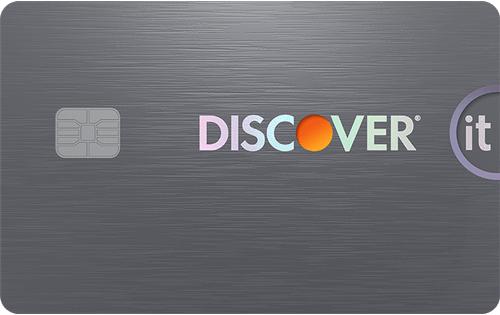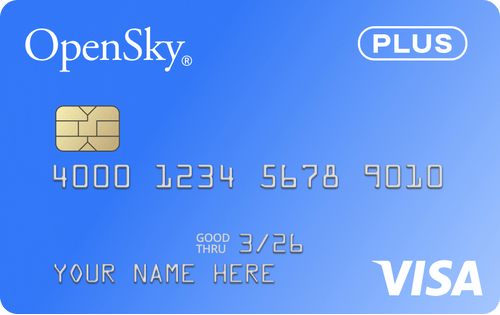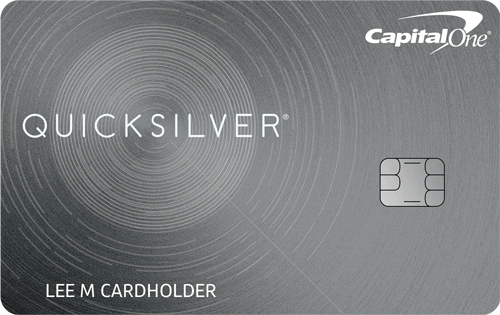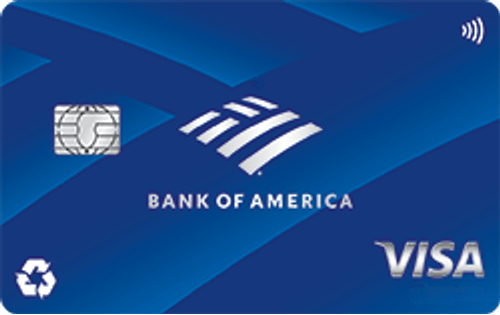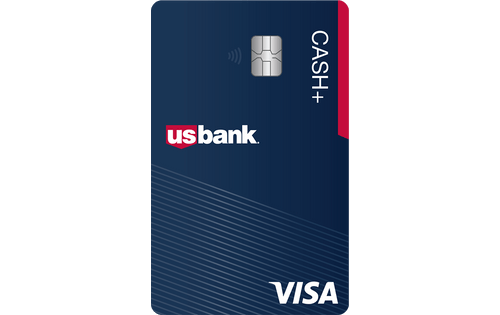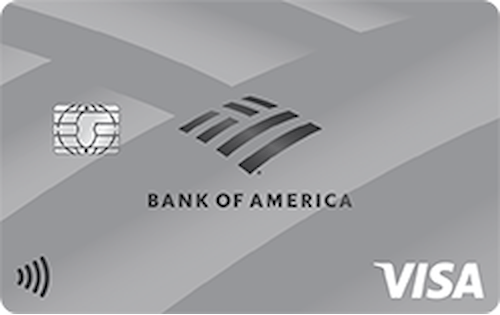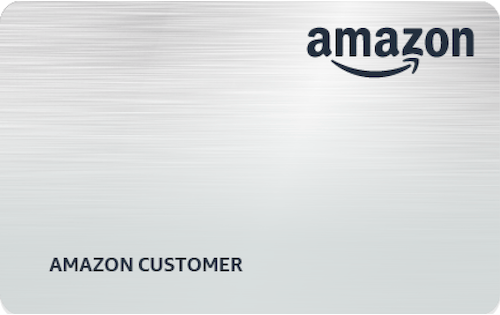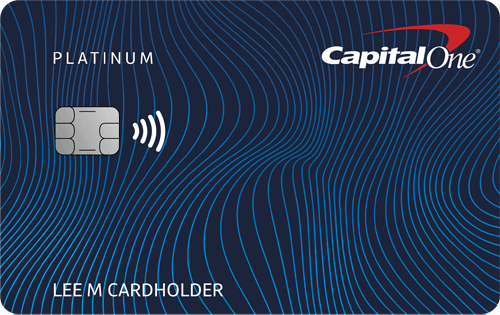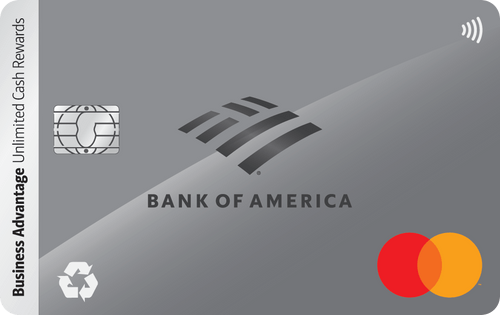- Best secured credit cards compared
- Methodology
- Sources
- Beginner’s guide to secured cards
- About the author
- Best secured credit cards FAQ
- Expert opinions
Best Secured Credit Cards Compared
| Credit Card | Best For | Security Deposit | Minimum Credit Score | Minimum Deposit |
| Discover it® Secured Credit Card | Overall | $200 | 300 | $200 |
| U.S. Bank Cash+® Visa® Secured Card | Cash Rewards | $300 | 300 | $300 |
| Capital One Platinum Secured Credit Card (see Rates & Fees) | Partially-Secured | $49, $99 or $200 | 300 | $49, $99 or $200 |
| OpenSky® Plus Secured Visa® Credit Card | No Credit Check | $300 | 300 | $300 |
| Bank of America® Travel Rewards Secured Credit Card | Reward Points | $200 | 300 | $200 |
| Business Advantage Unlimited Cash Rewards Secured credit card | Small Business | $1000 | 300 | $1000 |
Methodology for Selecting the Best Secured Cards
How Two-Year Cost Is Calculated
Two-year cost is used to approximate the monetary value of cards for better comparison and is calculated by combining annual and monthly membership fees over two years, adding any one-time fees or other fees (like balance transfer fees), adding any interest costs, and subtracting rewards. Negative amounts indicate savings. When fees or other terms are presented as a range, we use the midpoint for scoring purposes.
Rewards bonuses and credits have been taken into account for two-year cost calculations. However, bonuses applicable to only a very small portion of cardholders are not considered. For example, credits and bonuses awarded for spending or redeeming rewards through a company portal with non-co-branded cards have not been taken into account. Similarly, bonuses and credits related to spending with specific merchants using a non-co-branded card have not been taken into account (for example, if Card A offers credits with DoorDash, this feature would not be factored into calculations because it is hard to assess how many cardholders would use the benefit or exactly how much value they'd get from it).
Cardholder Spending Profiles
Given that different users have different goals and are likely to use their credit cards differently, we identified spending profiles that are representative of different users’ financial priorities and behaviors. For each cardholder type, we have assumed a specific amount of monthly spending by purchase type (e.g., groceries, gas, etc.), as well as an average balance, balance transfer amount, amount spent on large purchases and average monthly payment. Spending assumptions are based on Bureau of Labor Statistics data for consumers and PEX data for businesses.
Sources
WalletHub actively maintains a database of 1,500+ credit card offers, from which we select the best secured credit cards for different applicants as well as derive market-wide takeaways and trends. The
underlying data is compiled from credit card company websites or provided directly by the credit card issuers. We also leverage data from the Bureau of Labor Statistics to develop cardholder profiles, used to estimate cards’ potential savings.
Beginner’s Guide to Secured Credit Cards
What Is a Secured Credit Card?
A secured credit card is a type of credit card that requires the user to place a security deposit to open the account, which the card’s issuer holds as collateral until the account is closed or upgraded. The amount of the security deposit usually serves as a secured card’s spending limit.
Secured credit cards are the easiest type of credit card to get, and they usually have low annual fees. A secured credit card can also help you build or rebuild your credit, just like a “normal credit card.” Learn more.
How Do Secured Credit Cards Work?
Secured credit cards work like any other credit card, except for the refundable security deposit that secured cards require. Your credit limit will generally equal the amount of that deposit, which prevents overspending and allows for higher approval odds as well as better rewards and lower fees.
Here’s a quick rundown of how the process of getting and using a secured credit card should work:
- You place a refundable security deposit using a bank transfer.
- The amount of your deposit becomes your spending limit.
- The credit card company holds your deposit as collateral.
- You make purchases and payments, just like you would with any other credit card.
- You get the deposit back when you close your account and bring your balance to zero or graduate to an unsecured card.
Secured Credit Cards vs. Unsecured Credit Cards
The main difference between a secured credit card and an unsecured credit card is that secured cards require you to place a refundable security deposit when you open your account. The amount of this deposit typically serves as the credit limit for the secured card, which means you have to pre-pay for purchases with a secured card. Unsecured credit cards, on the other hand, give access to a credit line that isn’t “secured” with a deposit.
There is no difference between secured and unsecured credit cards when it comes to building credit. All major secured cards report account information to the major credit bureaus on a monthly basis, just like unsecured cards. In fact, you can’t tell secured and unsecured cards apart on a credit report. So as long as you use either type of card responsibly, your credit score should improve.
Different types of secured & unsecured credit cards compared
| Category | Fully Secured | Partially Secured | Unsecured for Bad Credit | Other Unsecured |
| Min. Credit Required | Bad | Bad | Bad | Limited |
| Min. Deposit | $200 | $49 | $0 | $0 |
| Application Fee | $0 | $0 | Up to $95 | $0 |
| Min. Credit Limit | $200 | $200 | $300 | $300 |
| Builds Credit? | Yes | Yes | Yes | Yes |
| Rewards Available? | Rarely | No | Rarely | Yes |
| 0% APR Available? | Rarely | No | No | Yes |
Learn more about the differences between secured and unsecured cards.
How to Get a Secured Credit Card
You can get a secured credit card by going to your bank or credit union and asking for an application, or by applying for a secured card online. Here’s how to go about it:
- Compare secured credit cards to find the right card for you. Comparing offers online makes it easy to find the right combination of low fees, security deposit/credit limit options, and rewards that suit your spending habits.
- Fill out an application. You need to be at least 18 years old and have a Social Security number, an ITIN or a passport, as well as a U.S. address. In addition, most secured credit card applications require you to choose your deposit amount. How and when you pay your deposit will depend on the card’s issuer. But you should be prepared to provide your bank account information or open a savings account with the issuer to pay the deposit.
- Wait for a decision. Credit card applications are often processed instantly. But if not, many card issuers have a website or phone number to check your application status.
- Wait for your credit card in the mail. After you pay your deposit, your card will be mailed to you. This could take anywhere from a few days to a few weeks.
How to Build Credit With a Secured Credit Card
To build credit with a secured card, you first need to choose a card that reports account information to the major credit bureaus each month. Nearly all major secured cards report to the bureaus, but it’s still good to check. This should be disclosed in a card’s terms and conditions, or you can ask customer service.
After getting the right card, you just need to keep your account in good standing. In other words, make at least the minimum required payment by the due date every month and try to keep your balance as low as possible. This will result in positive information flowing into your credit reports each month, gradually building your credit history and improving your credit score.
If you don’t trust yourself to spend responsibly, make sure to pay any fees associated with the account and just keep the card in a drawer for emergencies. Keeping your account open and in good standing is enough to build credit. You don’t need to make purchases.
You can track your credit score for free on WalletHub. You’ll also get personalized credit improvement recommendations with your free account.
Learn more about how to build credit with a secured card.
Pros and Cons of Secured Credit Cards
The advantages of secured cards ultimately outweigh the disadvantages. Most importantly, secured credit cards are inexpensive, easy to get, and capable of helping you improve your credit score.
| Pros | Cons |
| High approval odds, even with limited or bad credit | Approval is not guaranteed |
| Monthly reporting to 1-3 major credit bureaus | $200+ security deposit is required |
| Lower fees than unsecured cards for bad credit | Credit limit usually equals the deposit amount |
| Hard to overspend | Rewards are rare |
| Deposit is fully refundable | No access to the deposit while the account is open |
| Chance to graduate to an unsecured card with consistently on-time payments | Upgrades are not guaranteed |
Learn more about the pros and cons of secured credit cards.
Who Are Secured Credit Cards Best For?
Secured credit cards are best for people who want to rebuild bad credit, and they’re also good for people building credit from scratch. Secured cards are great for credit-score improvement because they offer nearly guaranteed approval and report account information to the major credit bureaus each month. As long as you always pay the bill on time, positive information will pile up in your credit reports, gradually covering up past mistakes or a thin credit file and improving your credit score.
Learn more about when it makes sense to use a secured credit card.
Alternatives to Secured Cards
Secured credit cards are not the only game in town. The best alternatives to a secured credit card are:
Unsecured credit cards for bad credit
Unsecured credit cards for people with bad credit do not require a security deposit, but they do tend to charge higher fees and interest rates than secured cards, making them more expensive in the long run. An unsecured card can help you borrow a small amount of money when you have damaged credit, however.
Unsecured credit cards for no credit
Unsecured credit cards for people who are new to credit usually have lower fees than unsecured cards for bad credit. They sometimes have very good rewards, too. As a result, newcomers to credit should consider unsecured starter credit cards before turning to secured cards.
Secured lines of credit
A home equity line of credit, or HELOC, is one example of a secured line of credit. It allows you to borrow money as needed based on your home’s value, and bad credit may not prevent you from being approved if you have a lot of income and little debt. Alternatively, you might be able to get a line of credit secured by other assets, like money in a bank account.
Secured personal loans
You might be able to put down money in a bank account, a car’s title, your home, or even valuables like jewelry to secure a loan, depending on the lender. Having collateral increases your chances of approval with bad credit. Be careful, though, because you could lose your property if you don’t pay the loan back on time.
Unsecured personal loans for bad credit
Several personal loan providers accept applicants with bad credit, and you might be able to borrow anywhere from $300 to $50,000 and potentially get a decent APR. A lot depends on the lender you pick and what kind of shape your finances are in overall. It’s best to compare offers and pre-qualify first.
Credit-builder loans
You won’t be able to borrow any money with a credit-builder loan, but you can improve your credit score by making on-time payments. Credit-builder loans can be pretty cheap, too. There aren’t many available, however.
Other alternatives include becoming an authorized user on someone else’s credit card or borrowing from friends or family. In addition, if your main reason for looking into secured credit card alternatives is that you’re concerned about getting rejected, you may want to consider applying for a secured card that doesn’t do a credit check. Your credit history won’t impact whether you’re approved or denied.
Learn more about secured credit card alternatives.
